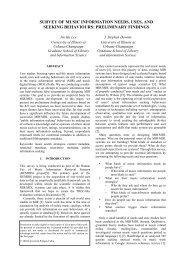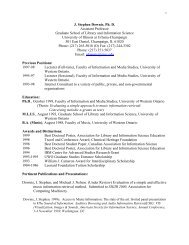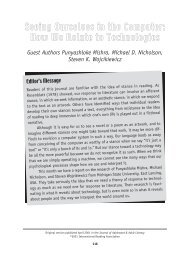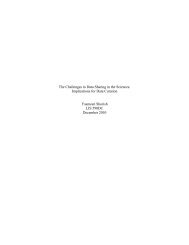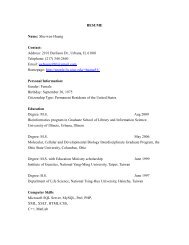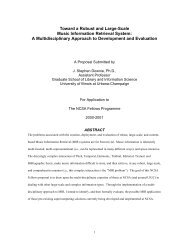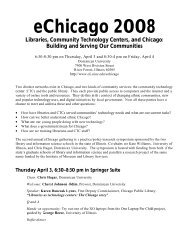The Anatomy of Bibliography - Illinois
The Anatomy of Bibliography - Illinois
The Anatomy of Bibliography - Illinois
Create successful ePaper yourself
Turn your PDF publications into a flip-book with our unique Google optimized e-Paper software.
4. (Apr. 9, 10)<br />
the ways in which the practices <strong>of</strong> bibliography have been explained<br />
structurally and historically.<br />
Each <strong>of</strong> the major specialties discussed in Chapters III, IV, V, and VI sees<br />
itself as the central focus <strong>of</strong> all bibliography: the others are peripheral. 4 Each<br />
has developed and flourished through its own canonical practices. This book<br />
proposes instead that there is totality to bibliography that subsumes its<br />
specialties. Its canon is the sum <strong>of</strong> the canons <strong>of</strong> its specialties. My goal is to<br />
suggest the interrelationships. I have attempted to do this with a lambent<br />
brevity that I hope may be seen as provocative rather than superficial.<br />
Bones and muscles allow bodies to move, flesh and blood bring them to life.<br />
<strong>The</strong> bones and muscle in this anatomy book are the overarching arguments <strong>of</strong><br />
the main text, which outlines the functions <strong>of</strong> bibliography. <strong>The</strong> flesh and<br />
blood are the digressions and citations. I hope the digressions may work a bit<br />
like the repertory <strong>of</strong> anecdotes a lecturer uses in hopes <strong>of</strong> questions from the<br />
class; brief asides and hints on dissertations for someone to pursue someday. It<br />
is out <strong>of</strong> them, in all their discursive abundance, that bibliographical practice<br />
emerges. As for the citations, in all their pr<strong>of</strong>usion, I see them as a bibliographer<br />
would: all citations are superficial until one reads what they are citing.<br />
In Burton’s day, anatomy was a very different subject. Literature was too.<br />
Burton’s <strong>Anatomy</strong> would have been far less perceptive if he had read Henry<br />
Gray’s Human <strong>Anatomy</strong>, or used footnotes. Nor would Jackson have been as<br />
delightful if it were not so clearly a parody <strong>of</strong> Burton. My choice <strong>of</strong> a title owes<br />
much to Terry Belanger, who on reading an earlier draft <strong>of</strong> this book (and with<br />
his legendary devastating candor) described it as “Shandean.” Sterne’s debt in<br />
Tristram Shandy to Burton may lie behind my title, but I am neither Burton,<br />
Sterne, nor Jackson, and my perspectives rather different.<br />
===============<br />
4 Neil Harris comments thus: “most extant definitions <strong>of</strong> bibliography have been produced by the<br />
simple device <strong>of</strong> having bibliographers sit in front <strong>of</strong> a mirror” and describe themselves. (See the<br />
syllabus for his course, “Introduction à la bibliographic matérielle,” syllabus, 2004, on the website <strong>of</strong><br />
the Institut d’histoire du livre in Lyons.) He continues by quoting A. E. Housman: “everybody has<br />
his favourite study, and he is therefore disposed to lay down, as the aim <strong>of</strong> learning in general, the aim<br />
which his favourite study seems specially fitted to achieve, and the recognition <strong>of</strong> which as the aim <strong>of</strong><br />
learning in general would increase the popularity <strong>of</strong> that study and the importance <strong>of</strong> those who<br />
pr<strong>of</strong>ess it.”<br />
4



